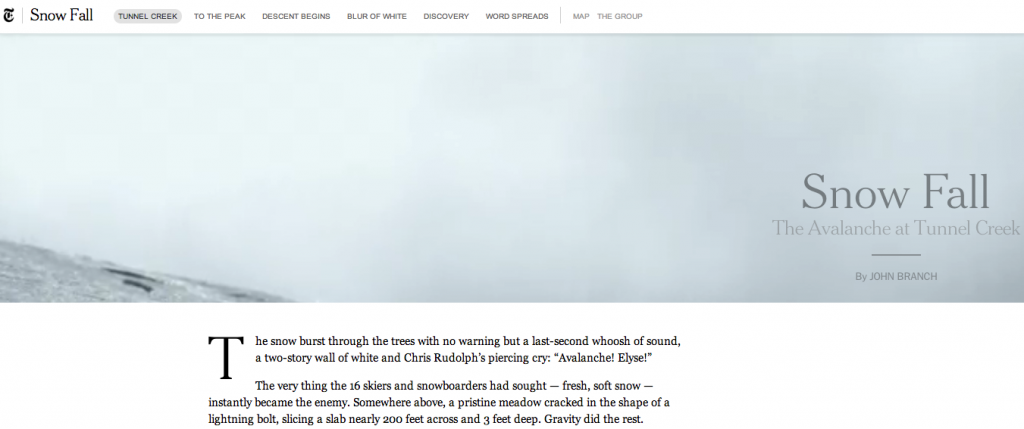The New York Times turned the February avalanche at Tunnel Creek in Washington State into a completely absorbing multimedia experience. I was both spellbound and delighted by the video, audio, maps, photos, GIFs and most of all words, which all added up to an engaging, vital storytelling experience.
The gripping tale of the exciting lead-up to, feelings of dread about, and inevitable tragic end to the ski outing could have been told singularly by the Times. Only the Times (or a news organization of similar stature) could spend six months reporting a story that, according to the end credits “involved interviews with every survivor, the families of the deceased, first responders at Tunnel Creek, officials at Stevens Pass and snow-science experts” as well as reports from police, the medical examiner and 911 calls. Sixteen names in addition to John Branch’s (the writer) are listed in the credits (byline seems an even more outdated term than usual on this piece).
The article honors the victims and their families, approaches the survivors gracefully and tactfully, and serves as a cautionary tale to adventurers. And it fires up journalists and others who admire the well-reported, well-structured feature, a story form that has fallen out of favor in the era of pageviews, soundbites and 140-character updates. It’s as well written as anything I’ve read in the genre, including Jon Krakauer’s stuff, and it sets a new bar for multiformat journalism.
And it might even make money: Notice at the end, there’s a call-out to buy an e-book version of the article on Byliner.
For those of us who wring our hands about the death of print and the future of journalism, it’s nothing short of inspirational.
